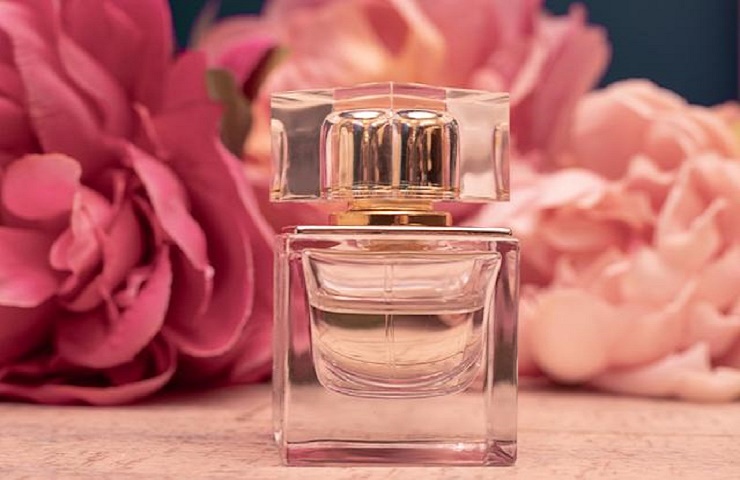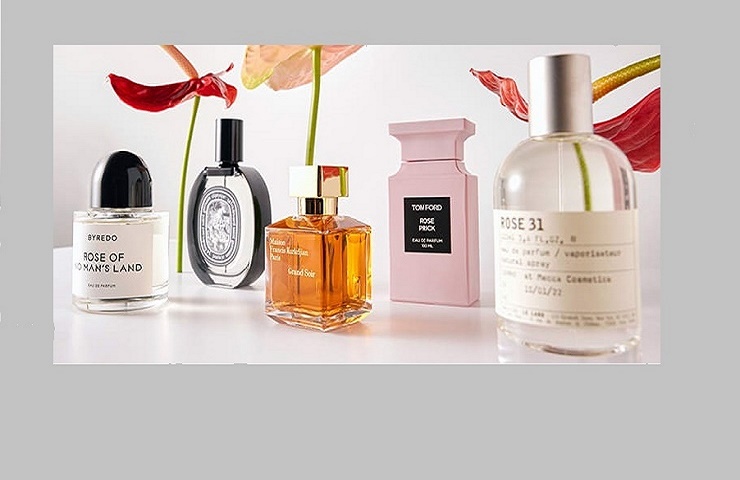January 26, 2023
Introduction of different types of scent groups
Olfaction groups:
Olfaction groups are among the basic concepts in understanding the classification of perfumes. In this article, we have fully answered all your questions about scent groups. The naming of odor groups more than anything based on the following Items:
- Raw materials used in making perfume (perfume notes).
- The feeling and imagination that a scent creates in a person.
- The general perception shared by people about a smell.
Notes in the smell group
Initial note (first note):
It is the first layer of the perfume, which can be smelled as soon as it is used. This note plays an important role in buying a perfume and its duration is 15 minutes. Common opening notes include scents such as lemon, lavender and lime, orange blossom, whose molecules are very small and evaporate quickly.
Middle note (Heart note)
After the initial note fades, the second layer of the perfume shows itself, the middle note is 70% of the perfume scent and is considered the main part and basis of the perfume. Common middle notes include floral notes such as spring orange, jasmine, geranium, and sometimes black pepper, cardamom, and bay leaves.
Final note (base note):
The final or base note usually does not have a good and pleasant smell, and the middle note is the filling role of the aroma for the final note. Common base notes usually include vanilla, musk, amber, cedar, patchouli, or sandalwood.
Aromatic cycle
Aromatic cycle or aromatic circle or scent cycle are all names of a pie chart that shows inferred relationships between groups of scents based on similarities and differences in their scents. This chart is used as a classification tool in perfumery. Austrian perfumer Paul Jellinek published the first sample of the perfume cycle in 1949 in the original German edition of the book Practice of Modern Perfumery. Other notable versions include the Fragrance Circle in 1979 by U. Harder, the Wone Aroma cycle in 1984 by chemist Ann C. Noble, and the Fragrance cycle in 1992 by Michael Edwards was Created and developed.

Aromatic category
the category of aromatic perfumes is one of the oldest groups of perfumes in the science of perfumery and is described as a group of notes that induces a feeling of vitality and at the same time seriousness. Collection of aromatic plants such as rosemary, cumin, cardamom, lavender, basil, nutmeg, mint, tarragon, black pepper, vetiver, ginger, oak moss, geranium, rose, sage, thyme, spring orange flower, saffron, flower Vanilla, cedar and sage (sage is a green spice plant with a strong smell that grows in tropical regions) are present in this category, which provide a spicy and somewhat bitter scent, which is why men's perfumes are more aromatic than women's perfumes.
The Chypre (Mediterranean) fragrance group
The Chypre (Mediterranean) fragrance group or Chypre entered the world of perfume and cologne in 1917 after creating the perfume (Coty Chypre). The French word Chypre is derived from the word (Cyprus) which means Cyprus, an island in the eastern Mediterranean Sea. A Mediterranean scent is taken from the delightful smells and fragrances of the Mediterranean coast of Cyprus and reminds of happy memories on the beautiful beaches of this island. The sharp and penetrating scent of this group is due to the presence of compounds such as patchouli, oak moss, bergamot, sweet lemon, lime, cardamom, leather, vetiver, jasmine, rose, white sandalwood, incense, pink pepper and it is full of flowers.
Citrus fragrance
The Citrus fragrance group has a long history, and those perfumes that have a lot of citrus in their fragrances are included in this group. All citrus fragrances have a cool and summer trend and are mostly youth-friendly. In the perfumes of this group, the main raw materials are citrus fruits and fruits such as: bergamot, orange, grapefruit, red orange, lime, sweet lemon, tangerine, Jaffa tangerine (clementine), mandarin orange (a type of tangerine), kumquat along with other aromatic, woody compounds and tart aromatic notes (sour and slightly bitter) such as lemon peel, amber and guaiac wood to create masculine scents and with a combination of floral notes such as white freesia flower, sage, Gardenia flower and thyme flower are used to make women's fragrances.
Floral group
The floral group is one of the largest groups of scents, especially among women's perfumes, the unique combinations of flowers can give a warm, cool or mild character to a perfume, and you can find in the floral group, perfumes find a variety that suits the different seasons of the year. In this group of perfumes and colognes, there are usually many different combinations of flowers in the middle notes, which make this family very feminine, delicate and soothing. The perfumes of the floral group in their base notes include all kinds of flowers and blossoms such as ice flower, jasmine, spring orange flower, violet, lily, narcissus, Maryam, marigold, orchid, ylang ylang, lily, saffron flower, rose, lotus, peony, magnolia, freesia, geranium, chameleon, carnation, vanilla, etc.
The woody scent group
The woody scent group is one of the newest and most emerging scent groups, woody scents used to be a subset of other scent groups, but over time, the use of woody notes in perfumes increased, this smell group also started his work independently. Wood notes are excellent stabilizers and give durability to other scent combinations; for this reason, perfumes are abundantly found in the base note (end note). Most of the fragrances in this group are masculine and have a heavy and specific smell that includes woody notes in their heart. Wood extract from this group is prepared from materials such as sandalwood, vetiver, birch, guaiac, resin and resin materials, and cedar, it is important smell groups in perfumery and cologne industry.
Oriental scents
Oriental scents with spices, amber, musk, incense and resin are rooted in the history of perfume. Today, many of the same elements that were used for the first time in the East (India and Arabia) at the beginning of the origin of perfume and perfumery are used to make perfume. The scent of this fragrance group is usually warm, penetrating, and strong and stimulating, which are more suitable for use at night. In the perfume structure of this group, the predominant smell of amber is used classically in the structure of the perfumes of the oriental fragrance group thanks to its warm and seductive smell and compounds such as chameleon flower, milk, white sandalwood, coumarone, lily and vanilla. These perfumes are due to the presence of heavy and strong elements in the base notes for a long time it stays on the skin. Smelling the perfumes of the oriental fragrance group inspires a mysterious and strong feeling to the audience. The perfumes of this group can be female, male or jointly (unisex) according to the notes they have.
Leather group
The history of leather group of fragrances dates back to the distant years, the first leather perfume in history was registered under the name of Royal Creed brand, which was a manufacturer of leather gloves at that time. This perfume was used by the king of England at that time who liked the scent of leather gloves. The extraction of leather (animal) scents from the leather and skin of animals such as cows with their initial unpleasant smell, as well as sometimes from urine and feces, animal blood and even tar, has been one of the primary and traditional methods in perfumery and the first manufactured perfumes fall into this category.
The use of aromatic substances in order to eliminate unpleasant odors in leather products was common for the wealthy class before the industrialization of Europe in the 16th century. The scent of women's leather perfume and cologne is obtained from natural and animal sources and sometimes in an industrial way. Women's leather perfumes and colognes are often welcomed by fashionable people because of their bitterness and special scent; especially managers and employers are placed and conveys a sense of influence and empowerment to them.
The warm nature and spicy and bitter taste of leather perfumes are more compatible with the spirits of self-confident and stylish people to prove their personal and social position with the language of perfume. The perfumes of this category are mostly masculine because of their bitterness and special scent. Over time, due to the unpleasant and pungent scent of leather , it is mixed with other notes such as floral notes or different fruits; Musk, smoky notes and other animal and vegetable sources and various woods were combined to achieve an attractive and Gentle scent of leather.
The notes of this fragrance group contain compounds such as leather, oud, tobacco, musk, birch wood, mountain cypress tree, styrax or Java wild bush, castor, myrtle, black tea, patchouli, Amber Seal, red sandalwood, white sandalwood, cedar wood and suede (velvety leather), leather perfumes can be very expensive due to the rarity of raw materials , difficult extraction and special smell.

Last word:
There are other groups, but they are placed in the sub-category, and these 7 categories are a part of the main smell group, which are present in most perfumes according to the scent they have. Now your mentality about the group of smells and scents has become more complete and we have made shopping easier for you. Thank you to the companions of bayrock online perfume store who have been with us until the end of the article, please share your Experience about the scent groups you have used for us and other friends in the comments section. Also you can buy your favorite perfume scent from bayrock online shope and share your Opinion with bayrock team.